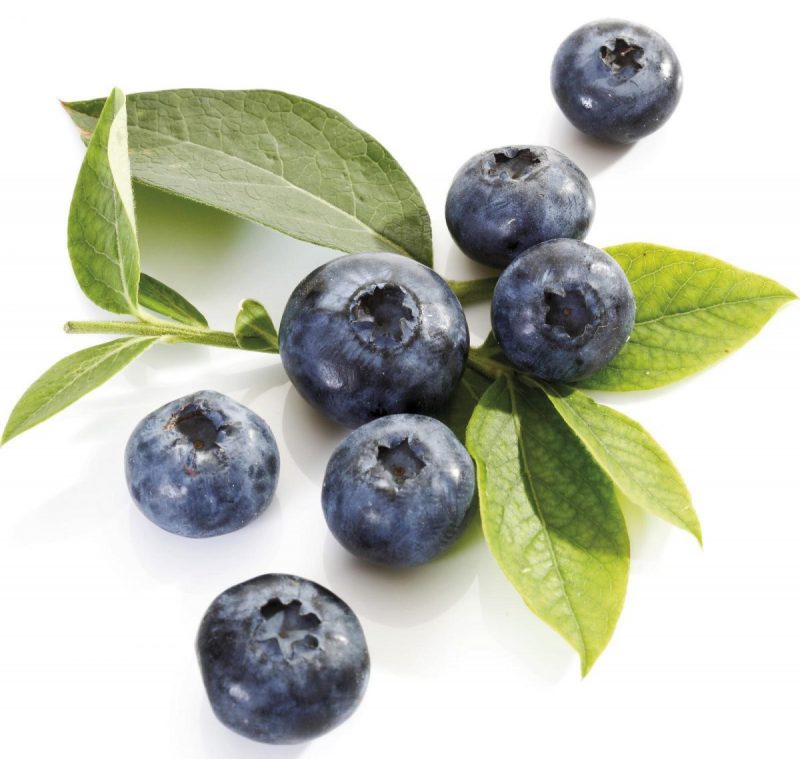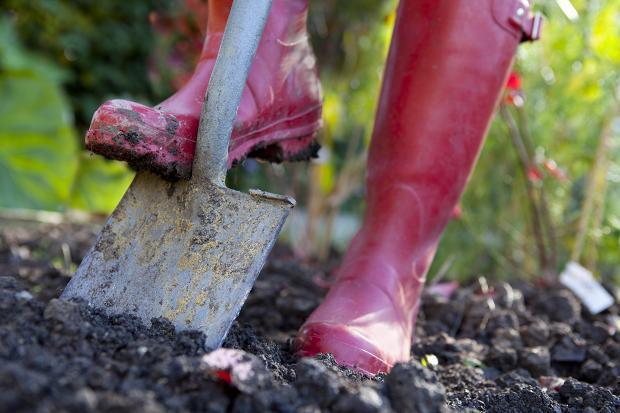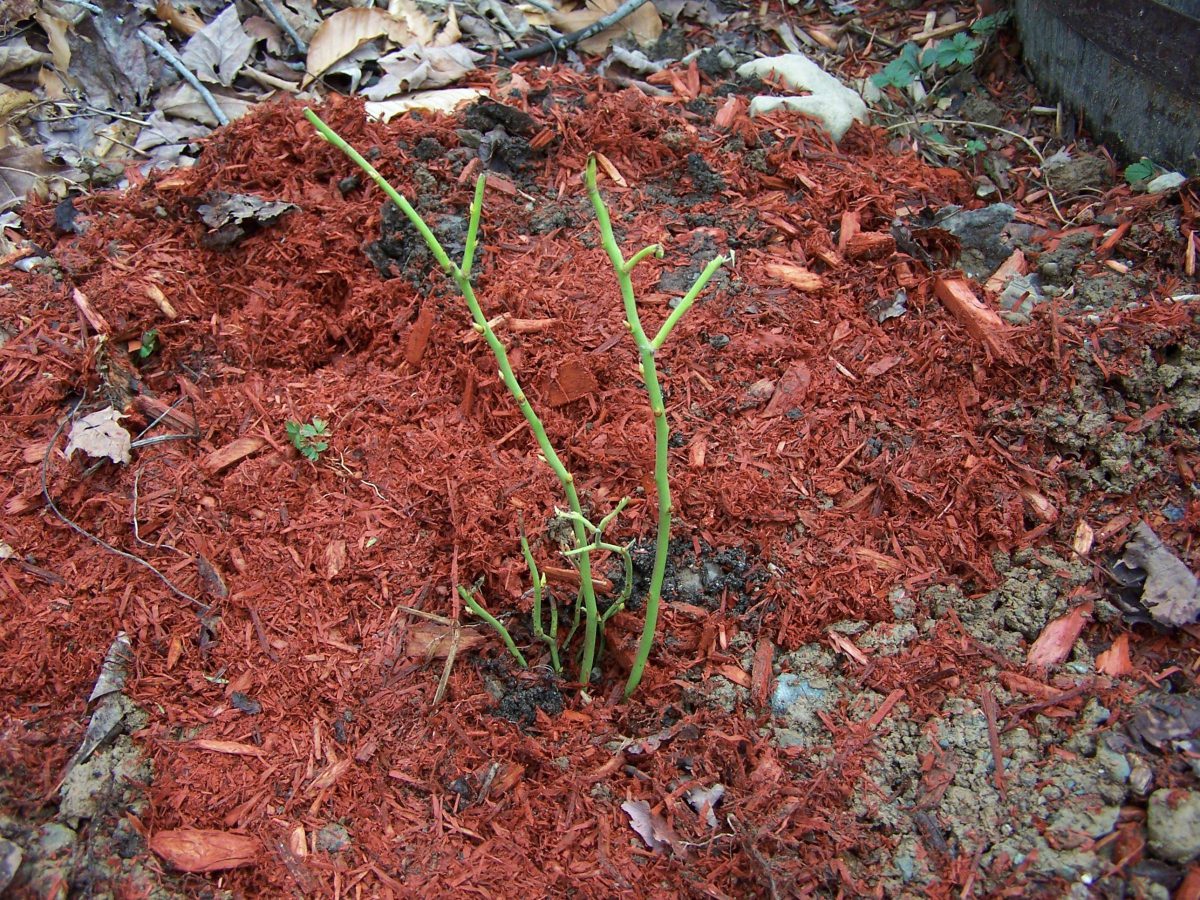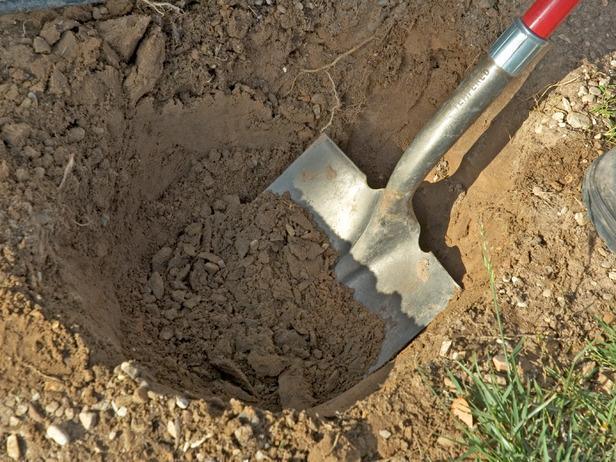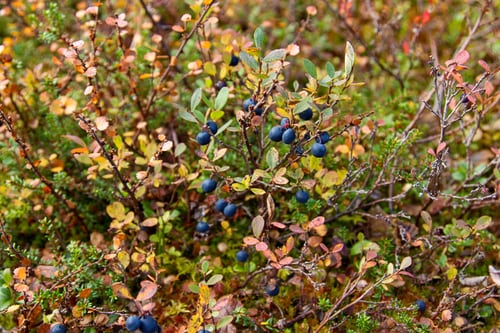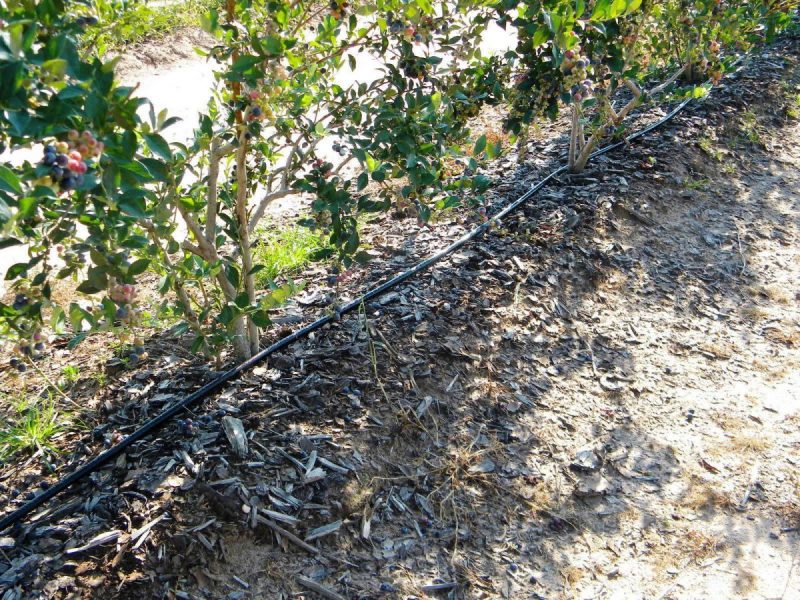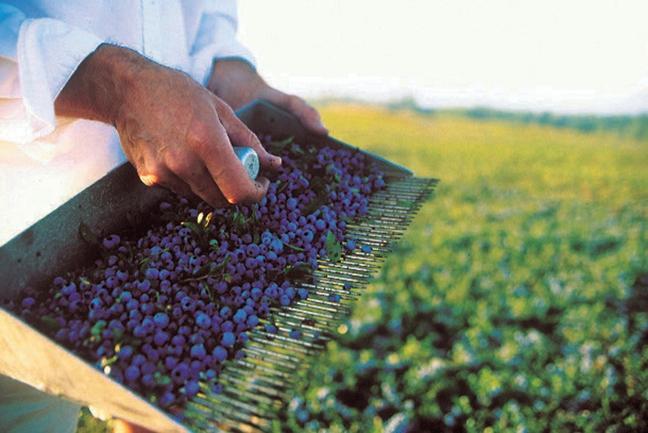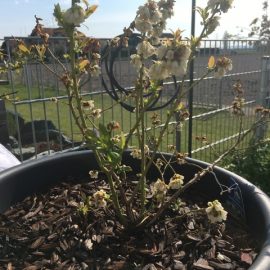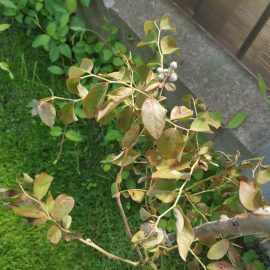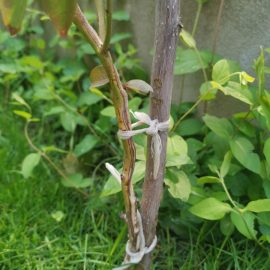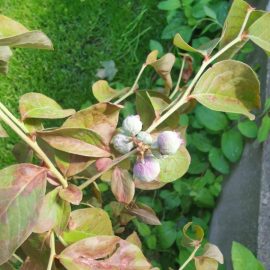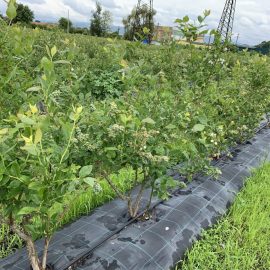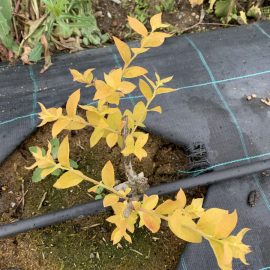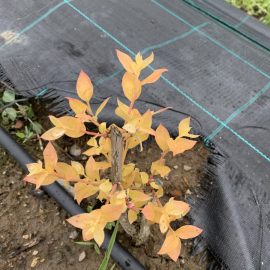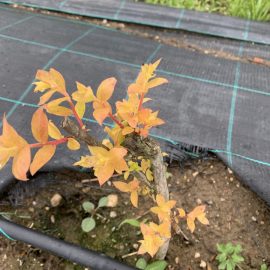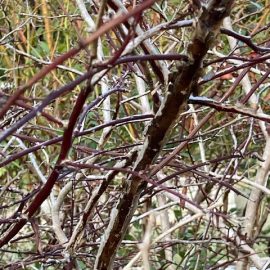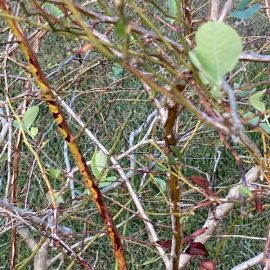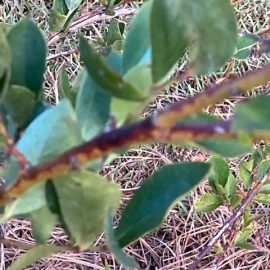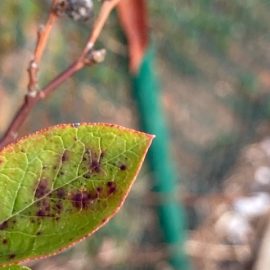Blueberry, planting, growing and harvesting
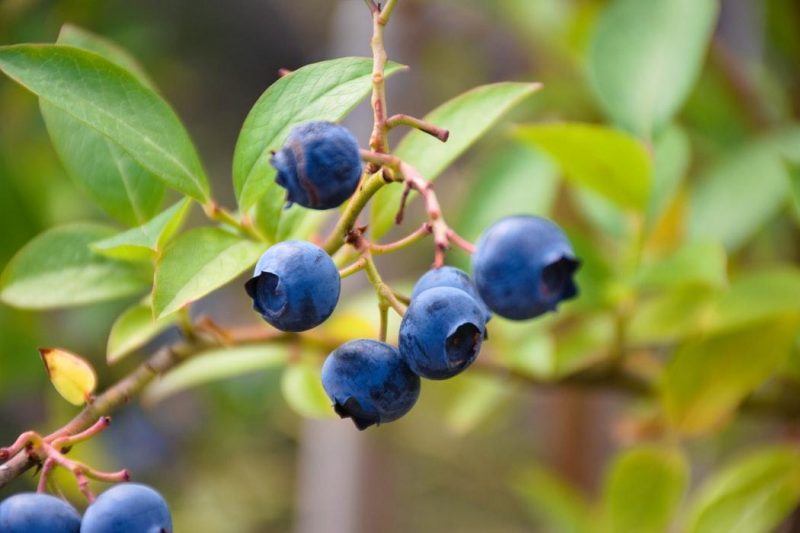
Blueberry (Vaccinium myrtillus) is a fruit-bearing shrub, growing as a bush. Generally, it is found in mountainous areas. In culture, highbush blueberries are predominant. The cultivated blueberry varieties are mostly of the species Vaccinium corymbosum.
The blueberry is cultivated because of its fruit. Blueberry fruit contains antibacterial, antiseptic substances and a natural insulin equivalent. Besides these substances, the fruit also contains calcium, sodium, magnesium, protein, and vitamins (A, C, B1, B2). Because of these properties, blueberries are recommended in the diet of people suffering from diabetes, vision disorders, respiratory inflammation, arteriosclerosis, or digestive system disorders.
Botanical characteristics
The blueberry grows as a bush, which can reach up to 1-2 m tall. The root system grows shallow and can reach 40 cm deep. The shrub develops numerous stems from the crown area, which are approximately equal and bear fruit in the second year after planting. The stems are sparsely branched and vary in color from green to reddish-brown. The vegetative buds are triangular and are located on the annual branches. The flowering buds are round and appear on the upper part of the stems. The leaves are elliptic, short-stalked and the flowers are clustered in raceme-like inflorescences. The blueberry plant is a self-fertile species, with a spherical, flattened, blueberry fruit covered with a layer of wax.
Environmental requirements
The blueberry is a species resistant to low temperatures, depending on the variety. During dormancy, it can withstand temperatures of -20℃, but late frosts destroy the flowering buds, causing a drastic drop in yield. The shrub is sensitive to drought, but also to excess moisture in the soil. The best results are obtained in areas where 800-1000 mm of rainfall falls annually, evenly distributed throughout the year. On well-lit land the blueberry fruits abundantly, but also tolerates lightly shaded land. Being sensitive to draughts, the plot on which the shrubs will be planted should be surrounded by protective curtains. A limiting factor in the blueberry crop is the soil, as the shrub grows and thrives on acid soils with a pH between 4.2 and 4.8. The soil must also be well-drained and rich in humus.
Soil preparation
For blueberry crops, the best preceding crops are conifers, which grow naturally on acidic soils. Also, if the soil corresponds in terms of acidity (pH 4.5-5.5), pastures and grasslands are good preceding crops. Wheat, oats, rapeseed, mustard, beans, and peas can be used successfully as preceding plants. Soil preparation should be done by the beginning of October. It starts by removing all plant debris (both above and below ground) and destroying weeds. For planting, individual pits or ditches can be made. On soils prone to waterlogging, it is recommended to make furrows along the planting rows.
Considering the pH requirements of blueberry varieties, planting site preparation involves using products to improve soil texture and maintain optimum soil acidity. Thus, acid peat (the most recommended), fermented manure, and conifer sawdust can be added to the planting pits or ditch. These can be mixed with the soil removed from the pit or planting hole and added at the bottom of the pit. Using additional mycorrhizal fungi helps to supply the plant with the necessary mineral elements. Thus, special fertilizers can be used, which can be mixed into the soil in the pit/planting hole.
Planting
The planting material must be well rooted and 30-45 cm high. and 30-45 cm high. It is recommended to plant several varieties for a better fruit set. Usually, the optimal planting period is autumn (October-November), but it can vary with the blueberry varieties and the site conditions. The recommended planting distances are 3 m between rows and 1 m between plants per row.
Before planting, the planting material should be trimmed, eliminating dry or damaged roots. To encourage the shrub roots to grip, they must be placed in a slurry of yellow soil, cattle manure, and water, the consistency of cream.
The actual planting begins with picketing the land (marking on the ground the location of each shrub) and digging planting holes, measuring 40 x 40 x 40 cm. The plant should be positioned so that 5-10 cm of the stem will be covered by soil. After planting, the soil around the shrub must be compacted to ensure good contact between the soil and the roots. It is recommended to mulch the soil with sawdust in 1.2 m wide strips along the row of plants. The open spaces between the mulched strips can be cultivated with clover or grass species.
Maintenance work
Within the first year after planting, the stems should be shortened to 3-4 buds to encourage the plant to form vigorous shoots from the bush base. In the second year, the vigorous upright shoots should be cut in half to allow branching, and the weak or unfavorable (oblique or outside the bush) shoots should be removed.
In the next 2-3 years, the same procedure must be followed, but only half of the new stems must be shortened. Further, to support the proper development of the bush, it is recommended to remove the fruit buds, if they appear, during the first 2 years after planting.
Recommended products
-
You can find products on a different store
Change Store -
You can find products on a different store
Change Store -
You can find products on a different store
Change Store -
You can find products on a different store
Change Store -
You can find products on a different store
Change Store -
You can find products on a different store
Change Store -
You can find products on a different store
Change Store -
You can find products on a different store
Change Store -
You can find products on a different store
Change Store -
You can find products on a different store
Change Store -
You can find products on a different store
Change Store -
You can find products on a different store
Change Store -
You can find products on a different store
Change Store -
You can find products on a different store
Change Store -
You can find products on a different store
Change Store -
You can find products on a different store
Change Store -
You can find products on a different store
Change Store -
You can find products on a different store
Change Store -
You can find products on a different store
Change Store -
You can find products on a different store
Change Store -
You can find products on a different store
Change Store -
You can find products on a different store
Change Store -
You can find products on a different store
Change Store -
You can find products on a different store
Change Store
Blueberry plants have a high regeneration capacity. They form new stems every year, which can crowd the bush and create favorable conditions for diseases and pests. Therefore, it is recommended that stems older than 5 years be cut back from the base, as well as those that are diseased or in unfavorable positions. From the new shoots, keep the most vigorous ones for fruiting. Depending on the situation, to avoid crowding the plant, you should thin and shorten the branches on the upper part of the bushes.
Weed control
For weed control, the best method is to use sawdust mulch in 1.2 m strips along the length of the plant rows. Also, you can apply approved herbicides between the rows, or you can till the soil superficially.
Recommended products
-
You can find products on a different store
Change Store -
You can find products on a different store
Change Store -
You can find products on a different store
Change Store -
You can find products on a different store
Change Store -
You can find products on a different store
Change Store -
You can find products on a different store
Change Store -
You can find products on a different store
Change Store -
You can find products on a different store
Change Store -
You can find products on a different store
Change Store -
You can find products on a different store
Change Store -
You can find products on a different store
Change Store -
You can find products on a different store
Change Store -
You can find products on a different store
Change Store -
You can find products on a different store
Change Store -
You can find products on a different store
Change Store -
You can find products on a different store
Change Store -
You can find products on a different store
Change Store -
You can find products on a different store
Change Store -
You can find products on a different store
Change Store -
You can find products on a different store
Change Store -
You can find products on a different store
Change Store -
You can find products on a different store
Change Store -
You can find products on a different store
Change Store -
You can find products on a different store
Change Store
Irrigation
In areas where rainfall does not provide the necessary amount of water (minimum 800 mm/year), irrigation is mandatory. Normally, 4-5 irrigations with norms of 400-500 cubic meters/ha are enough. Irrigation should be applied during the leaf growth phase, during the fruit growth phase, three weeks before harvest, and one week after harvest. Drip irrigation is also recommended and can be used successfully.
In case of intensive cultivation, additional fertilization is necessary. Apply annually a balanced NPK complex fertilizer with added microelements by drip irrigation (or by incorporation into the soil, depending on the product), in stages throughout the growing season. Also, you can apply foliar fertilization with specific products.
Recommended products
-
You can find products on a different store
Change Store -
You can find products on a different store
Change Store -
You can find products on a different store
Change Store -
You can find products on a different store
Change Store -
You can find products on a different store
Change Store -
You can find products on a different store
Change Store -
You can find products on a different store
Change Store -
You can find products on a different store
Change Store -
You can find products on a different store
Change Store -
You can find products on a different store
Change Store -
You can find products on a different store
Change Store -
You can find products on a different store
Change Store -
You can find products on a different store
Change Store -
You can find products on a different store
Change Store -
You can find products on a different store
Change Store -
You can find products on a different store
Change Store -
You can find products on a different store
Change Store -
You can find products on a different store
Change Store -
You can find products on a different store
Change Store -
You can find products on a different store
Change Store -
You can find products on a different store
Change Store -
You can find products on a different store
Change Store -
You can find products on a different store
Change Store -
You can find products on a different store
Change Store
To help plants overcome periods of stress, you can carry out foliar and root fertilization with products specially designed for this purpose.
Blueberry harvesting
Depending on the variety and environmental conditions, blueberries can be harvested from late July to early October. As blueberries ripen gradually, harvesting takes place in 3-4 stages at 5-7 day intervals. The optimum time for harvesting is indicated by the appearance of a specific color while the fruit skin becomes elastic when pressed. Generally, harvesting should take place in the morning or evening. Blueberries have a good storage capacity. Compared to other fruit bushes, they can be stored in cold storage for 4 weeks.














































































































































































































































































































































































































































